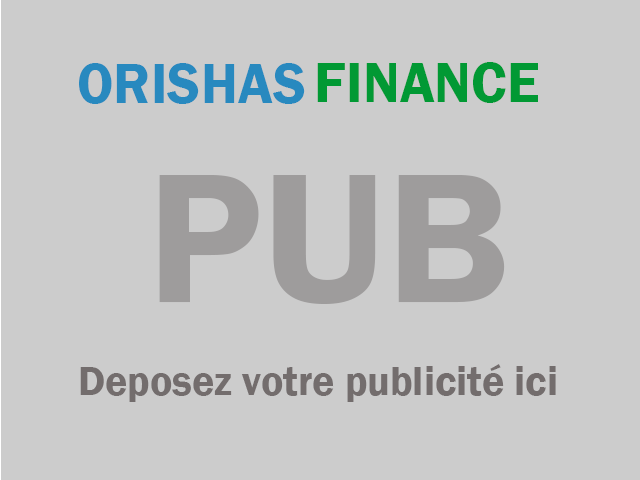 Les actualités de la BRVM en Flux RSS
Les actualités de la BRVM en Flux RSS
Nous agrégeons les sources d’informations financières spécifiques Régionales et Internationales. Info Générale, Economique, Marchés Forex-Comodities- Actions-Obligataires-Taux, Vieille règlementaire etc.
Enjoy a simplified experience
Find all the economic and financial information on our Orishas Direct application to download on Play StoreThe years pass and are not alike, like the markets. CommodAfrica takes a look in
the rearview mirror of 2019 to see how prices have evolved in markets as important as cocoa,
coffee, whether Arabica or Robusta, cotton, palm oil, rice and sugar. Major markets
for West Africa.
Cocoa: 3% increase over the year
Today, on the London futures market, a ton of cocoa is worth £1,797, or £51 more than there is a
year, which represents an increase of barely 3%, an illustration of a relatively well-balanced market. Its more
high, at £2,056, was reached on November 14 while its lowest price point was £1,571 on November 31
January 2019.
cocoa_london.png
Click to view image@Reuters
We are far from the performance of progression in 2018 when, still in London, the ton went from £
1,371 on January 8, 2018 to £1,746 on January 7, 2019, i.e. a surge of £375. But, we remain on levels
interesting compared to the last three years, without reaching the peaks of the years 2014-2016.
cacao_5_ans.png
Click to view image@Reuters
In terms of volumes, over the first three months of the 2019/20 campaign, exporters estimate that
arrivals at Ivorian ports are up by 3.6%, at 1,153,000 t, from 1 October 2018 to 5 January 2019.
But we have to wait for new statistics from the Cocoa Coffee Council (CCC) because, in mid-December, these
figures had been lower than those of the exporters. As for Ghana, the volumes of arrivals from the 1st
October to 19 December are stable, at 456,000 t out of a total campaign expected at 850,000 t.
A market characterized by a slowdown in the increase in West African production while the
global demand is growing; Côte d'Ivoire and Ghana are continuing their efforts to harmonize their
policies in order to present a common front in the face of a rapidly changing global market.
Coffee: 15% drop in Robusta but 21% increase in Arabica
Laughing Jean, Crying Jean... While Robusta fell in 2019 for its third consecutive year,
from £1,538 per tonne to £1,330 in the London market between January 8, 2019 and today,
Arabica, meanwhile, is recovering: from 102.75 cents per pound (c/lb) in New York at the start of 2019, it is trading today
124.20 cents. Arabica is blowing after two years of scarcity.
robusta.png
Click to view image@Reuters
A doubly bleak year for the world No. 1 in Robusta, Vietnam, which recorded a decline of
14%
of its volumes exported in 2019 compared to 2018, at 1.61 million tonnes (Mt) or 2.68
million 80 kilo bags (Ms). The fall in prices combined with the contraction in volumes lead to
a drop of 21.2% in its export earnings.
In Brazil, the world leader in coffee, all varieties combined, stocks are very low, which has fueled the
rise in prices, particularly of Arabica.
arabica.png
Click to view image@Reuters
Cotton: decrease of 4.6%
A rather sluggish year for cotton with sluggish demand in the face of a very comfortable supply and a
market which fluctuated according to the supposed progress in the negotiations between China and the United States
in the trade war that started in June 2018. A war that has deeply affected the market for
cotton, destroying demand, and the market share of American cotton in China, from which Brazil gained the most
benefit. Cotton prices fell for the second consecutive year in 2019, losing around
4.6% to close Dec. 31 at 69.05 cents per pound. This is less than in 2018 when they had decreased by
more than 8% over the year.
cotton.png
Click to view image@Reuters
However, since the end of August the prices of white gold have been on an upward trend which has been accentuated in
December. The official and imminent signing, scheduled for January 15, 2020 at the White House, of the agreement
on phase 1 between the United States and China will provide support to the market. Another positive factor is the
funds and speculators increased their long position which prevails from a bullish appreciation. A
additional impetus could be given by a recovery in demand induced by the agreement
Sino-American and/or a recovery of the world economy.
Palm oil: an outbreak of 47%
Palm oil is the big winner of 2019 with a 47% increase in prices, a record since
a decade. Over the year, palm oil traded at an average price of 2,576 ringgits, after a
decline of 15% in 2018. The recovery mainly started in the fourth quarter, palm oil
surpassing the 3,000 ringgit mark for the first time in nearly three years on December 26. At 31
December 2019, prices closed at 3052 ringgits per tonne ($743.64) on the Bursa Malaysia Derivatives
Exchange.
Several factors should confirm this upward trend in 2020. On the demand side, which is still
low, the decision of India, the world's largest buyer of edible oil, to reduce its taxes on
imports of crude and refined palm oil from countries in Southeast Asia (ASEAN) are expected to
increase its imports over the next few months with the reduction of the difference between oil from
palm and competing oils such as soy or sunflower oil. Remember that India depends on
70%, imports of edible oil against 44% in 2001/02 and palm oil represents
more than two-thirds of New Delhi's domestic oil imports. In addition, domestic consumption
in Malaysia and Indonesia is expected to increase with the efforts of these two countries to increase the proportion
palm oil in their biodiesel program.
On the supply side, it is tightening with the anticipated drop in production in the first half of 2020
in Indonesia than in Malaysia due to dry weather and reduced fertilizer use.
Finally, inventories fell. After hitting a 20-year high in December 2018 at 3.2 million
tonnes (Mt), they fell to 2.25 Mt in November 2019 and the Malaysian Palm Oil Board (MPOB) estimated
that they could end the year at 2.1 Mt while a Reuters poll estimates them at 2.06 Mt, its
lowest level for 27 months.
Rice: further decline over the year
Rice export prices in major Asian exporting countries are falling again this
year. Parboiled rice 5% from India was priced at the beginning of January between $362 and $366 per ton against $378-$384 at the end of 2018.
Same trend in Vietnam where 5% broken rice went from $390-$395 to $360. In Thailand, the
trend is also downward but less accentuated, Thai rice remains uncompetitive vis-à-vis
its main competitors. World rice stocks are particularly high, estimated at 183 million
tons in 2019, i.e. 36% of global needs.
Sugar: the roux climbs by 4.6%
White sugar quotes $361 per ton today in London against $345.40 on January 8, 2019, while the
brown sugar in New York fell from 12.65 cents per pound (c/lb) to 13.49 today. A rise with
backdrop, throughout the past year, of the prospect of a global deficit that could reach more
of 6 Mt this 2019/20 campaign with still a deficit situation in prospect for 2020/21. That said,
this did not cause prices to soar because global stocks remain oversupplied.
A market more closely linked than ever to oil prices as Brazil has reached record levels of production
of ethanol, with 35 billion liters produced, which may not be enough to cover the demand
up sharply while stocks are low. So much cane that does not go to sugar production...
Brown sugar.
Vous devez être membre pour ajouter un commentaire.
Vous êtes déjà membre ?
Connectez-vous
Pas encore membre ?
Devenez membre gratuitement
01/05/2024 - Matières Premières
29/04/2024 - Matières Premières
29/04/2024 - Matières Premières
26/04/2024 - Matières Premières
26/04/2024 - Matières Premières
26/04/2024 - Matières Premières
26/04/2024 - Matières Premières
26/04/2024 - Matières Premières
26/04/2024 - Matières Premières

01/05/2024 - Matières Premières

29/04/2024 - Matières Premières

29/04/2024 - Matières Premières
